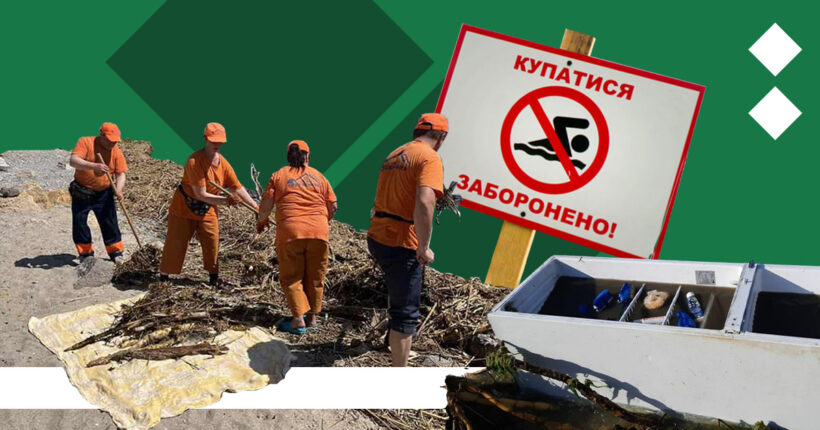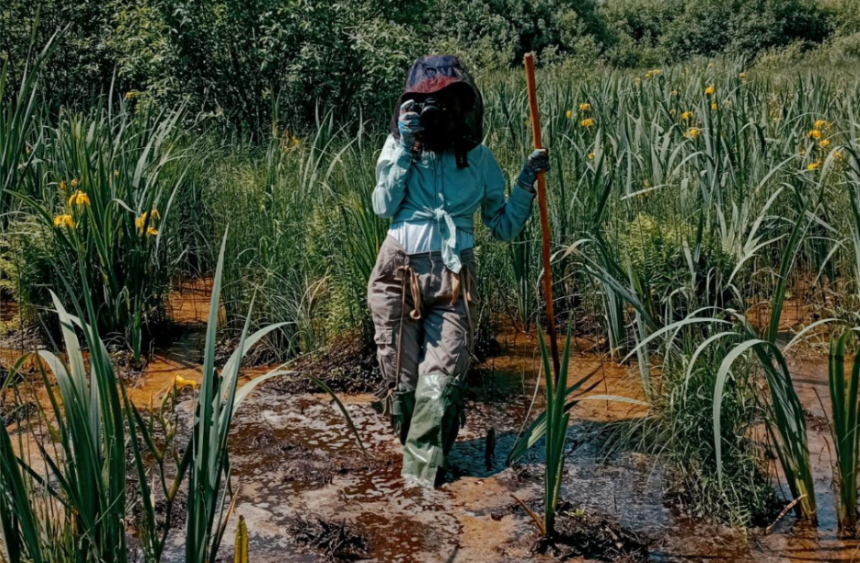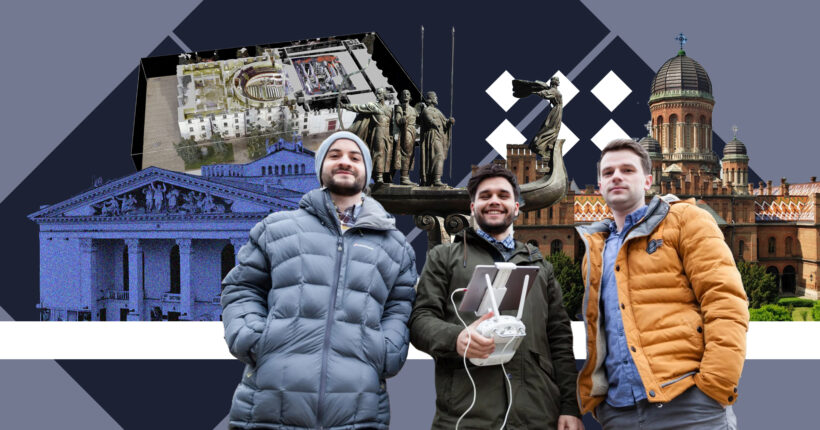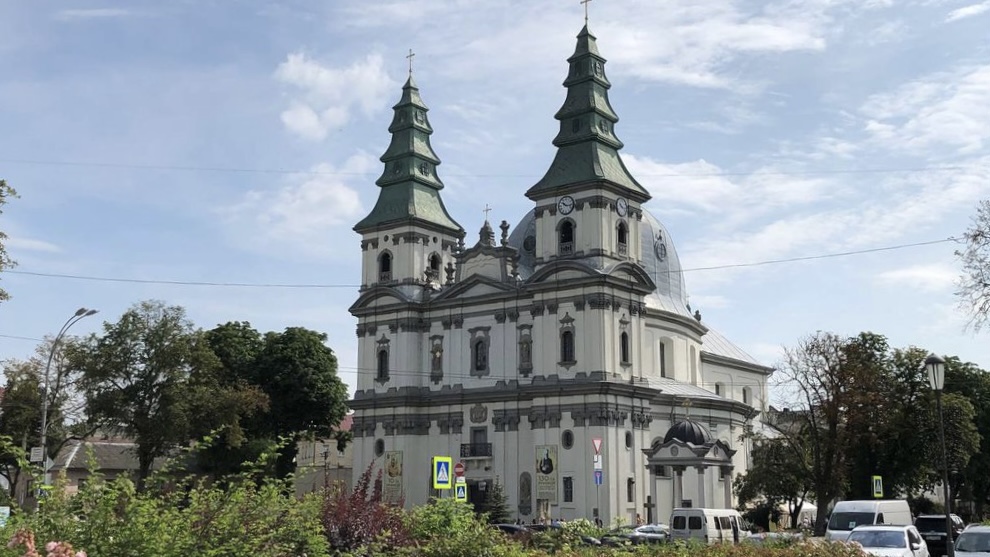
Consequences of blowing up the Kakhovka hydroelectric power plant, regular shelling, and heavy fighting — for the second year in a row, July in Ukraine does not mean the season of vacations and summer recreation. Ukrainians continue to fight for victory in the war. Rubryka captures the solutions that bring the cherished moment closer.
How the Black Sea coast is cleaned after disaster at the Kakhovka Reservoir

The Russians blew up the Kakhovka HPP in early June. Already in July, when the water receded, Ukrainians had their first solutions about how to deal with the consequences. The destruction of the hydroelectric power station became a real ecological disaster — the death of entire ecosystems, human casualties, destroyed houses, and a lot of garbage that got into the Black Sea.
For example, in Odesa, waves carry roof fragments, animal corpses, and household waste to the shore. Mines and projectile fragments are also washed ashore, making the cleaning process not an easy one. Rubryka told in this material how the sea coast is cleaned.
The de-occupied Kamianska Sich National Park fights against the drying up of the Kakhovka Reservoir

Kamianska Sich National Park, located in the Kherson region, was under occupation, and its director, Serhiy Skoryk, was captured by the Russians and managed to escape. Before the explosion of Kakhovka HPP, the park covered more than 50 kilometers of the Dnipro coastline and was a place of protection for more than 90 species of rare animals. Now the territory of the national park remains dangerous. However, they do not stop fighting for Ukrainian nature there.
In the National Park, efforts were made to save the accessible areas of the Kakhovka Reservoir. They are sown with annual plants to save the soil. Explore what else is being done to reduce the consequences of the disaster and how the de-occupied National Park lives in the material at the link.
Green energy from Kherson 18-year-old inventor

Yaroslava Polikarpova is 18, and despite her young age, she has already made an eco-friendly invention, founded a startup, and attracted the support of foreign partners. Yaroslava lived in Kherson and was there during the occupation of the city. Under the rockets and enemy tricolor, the inventor still managed to finish college, enter the Kharkiv Polytechnic and become a Ukrainian Future business incubator resident.
She created a wind-powered generator and is currently working on improving the invention. Rubryka shares how the girl worked on a project under occupation and later in a shelter for displaced persons.
Geographer in the swamps: how and why the Ukrainian National Geographic researcher traveled through the swamps of Polissia

Valeriia Kolodezhna is a geographer by trade and a researcher by heart. Before Russia's full-scale invasion in February 2022, she worked as a school teacher but lost her job on the first day of the war. Sad, at first glance, the news turned out to be a new opportunity!
Kolodezhna realized she wanted to create educational materials about Ukrainian swamps, which had long been her main research topic, but since the scientist wanted to talk about them in a special way, she went on a tour of the marshes of Polissia to record, research and be inspired. Rubryka tells how the geographer did it, what result she got, and what National Geographic has to do with it.
Digital reconstruction: how can modern technologies help preserve architectural heritage?

The Russians continue to destroy Ukrainian cities. In this context, preserving memory becomes especially important. Modern technologies come to the rescue. For example, with the help of 3D modeling, it is possible to preserve historical and cultural heritage and actively use this tool in reconstruction.
For example, the French company Iconem has been creating 3D models of cultural heritage objects that are under threat of destruction due to bombing or military conflicts in the regions for more than ten years. Read about how it works here.
How to protect architectural heritage: a case from Ternopil region

At the end of June, a construction fence appeared near the walls of the complex of the old Dominican church in Ternopil. The information stand announced that "restoration and adaptation of the premises of the former Dominican monastery" will occur here. However, it seems that the restoration turned out to be actually a reconstruction — an intervention stronger and, importantly, illegal.
The law of Ukraine prohibits the reconstruction of historical and cultural monuments of national importance, but a real fight took place to comply with this law. Rubryka's journalists talked about what activists are doing to protect the monument.
How a community in Vinnytsia built shelters for displaced people

The Dashivska community in the Vinnytsia region became one of the numerous reception points for resettlers. Since the beginning of the full-scale war, the community has taken in about three thousand displaced persons. Of them, 500 remained to live in the community.
Rubryka explores how they met the IDPs, tried to solve the issues of employment and housing, and how they attracted the support of European partners.
Original, but unprotected: how Ukraine preserves and destroys mosaic panels of the Soviet period

On July 27, the Law on Decolonization will come into force, which should end the mess with the destruction of monuments of the Soviet period. Those with only a propaganda meaning will be dismantled, and those with artistic value should be left alone. Rubryka found out in what situation the mosaic panels would end up and how public activists are trying to preserve them.
Don't turn a blind eye: how to teach yourself and your children to behave around people with prosthetics

The war in Ukraine has left many people seriously injured, and many more with prosthetics or mutilated body parts can be seen on the streets of relatively peaceful cities. Often, society does not know how to properly react to the wounded, so they simply look the other way.
Why does this happen? How to deal with people who have lost limbs? Rubryka explains how to teach children a polite reaction and what military amputees think about all this.
Those who shout to the world about war

Although residents of Western countries are informed about the war in Ukraine, they should be constantly reminded of it. In Europe, people can sometimes drift away from the issue and become numb to it due to a lack of information and ever-changing priorities that draw attention away from this war onto their own problems. The voice of the Ukrainian people must sound louder and louder to be heard where, thanks to the heroic resistance of Ukrainians, sirens do not sound, and Russian shells do not explode.
Ukrainians continue to protest against war abroad and demand fair sanctions and punishments for Russia. Rubryka has collected stories of Ukrainian women shouting about Russia's aggression.
Newsletter
Digest of the most interesting news: just about the main thing





